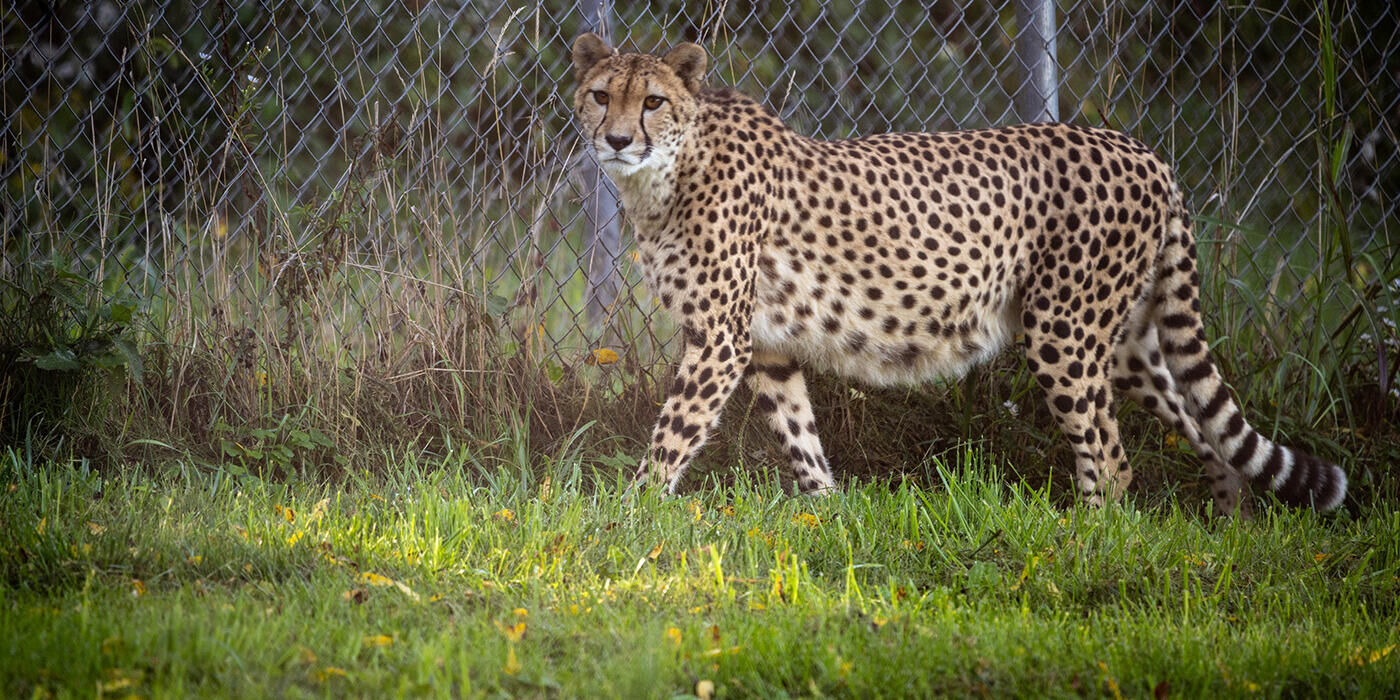A litter of four cheetah cubs was born on the Smithsonian’s National Zoo’s Front Royal, Virginia, campus in October.

Amabala, an adult female Cheetah at the Smithsonian’s Conservation Biology Institute Front Royal campus in Virginia, pregnant with a litter due in the fall of 2025. (Courtesy Smithsonian’s National Zoo and Conservation Biology Institute/Brooke B. McDonough)
(Courtesy Smithsonian’s National Zoo and Conservation Biology Institute/Brooke B. McDonough)
Courtesy Smithsonian’s National Zoo and Conservation Biology Institute/Brooke B. McDonough

A Cheetah Cam image of female cheetah Amabala, with her four cubs in their den, at the Smithsonian’s Conservation Biology Institute in Front Royal, Virginia.
(Courtesy Smithsonian’s National Zoo and Cheetah Cam)
Courtesy Smithsonian’s National Zoo and Cheetah Cam


A litter of four cheetah cubs was born on the Smithsonian’s National Zoo’s Front Royal, Virginia, campus last month.
Now, they can be seen through the Cheetah Cub Cam, a live camera feed available on the Zoo’s website.
The cubs were born Oct. 17 to Amabala, a 5-year-old cheetah, who was also born on camera back in 2020. It’s her first litter. The cub’s father, Flash, is eight years old and has three cubs from a previous litter; however, male cheetahs are not involved in raising their young.
According to the zoo, Amabala’s was the 20th litter born on the Front Royal campus. They’re the fifth litter to be livestreamed on the Cheetah Cub Cam.
The zoo is part of the Cheetah Breeding Center Coalition, a group of 10 cheetah breeding centers nationwide working to develop and maintain a viable North American cheetah population under human care. Amabala’s cubs will likely participate in the breeding program themselves one day, as their father is considered “genetically valuable,” the zoo says.
“Cheetahs can be challenging to breed, in part because female reproductive cycles can be sporadic and their behavior is often very difficult to interpret,” Adrienne Crosier, a cheetah biologist at the zoo’s Front Royal campus, said Saturday in a release announcing the births. “It’s taken our team of keepers, veterinary staff and biologists thousands of man hours to produce 20 litters. For that 20th litter to be Amabala’s is an exciting, full-circle moment for us.”
Don’t be surprised if the cubs are sleeping when you check the live feed: Baby cheetahs spend most of their early weeks napping, often lying on top of one another in a heap, according to the zoo. Also expect to catch them nursing, grooming, and playfighting with each other.
Zoo staff are remaining hands-off to allow Amabala to bond with her new babies. But they are watching the cam in case they need to step in. The cubs appear to be strong, active, vocal and eating well.
In June, eight endangered black-footed ferrets were born at the Front Royal campus to a black-footed ferret named Aristides.
In September 2023, five cheetah cubs — three males and two females — were born on the campus to 8-year-old Echo.
Get breaking news and daily headlines delivered to your email inbox by signing up here.
© 2025 WTOP. All Rights Reserved. This website is not intended for users located within the European Economic Area.

